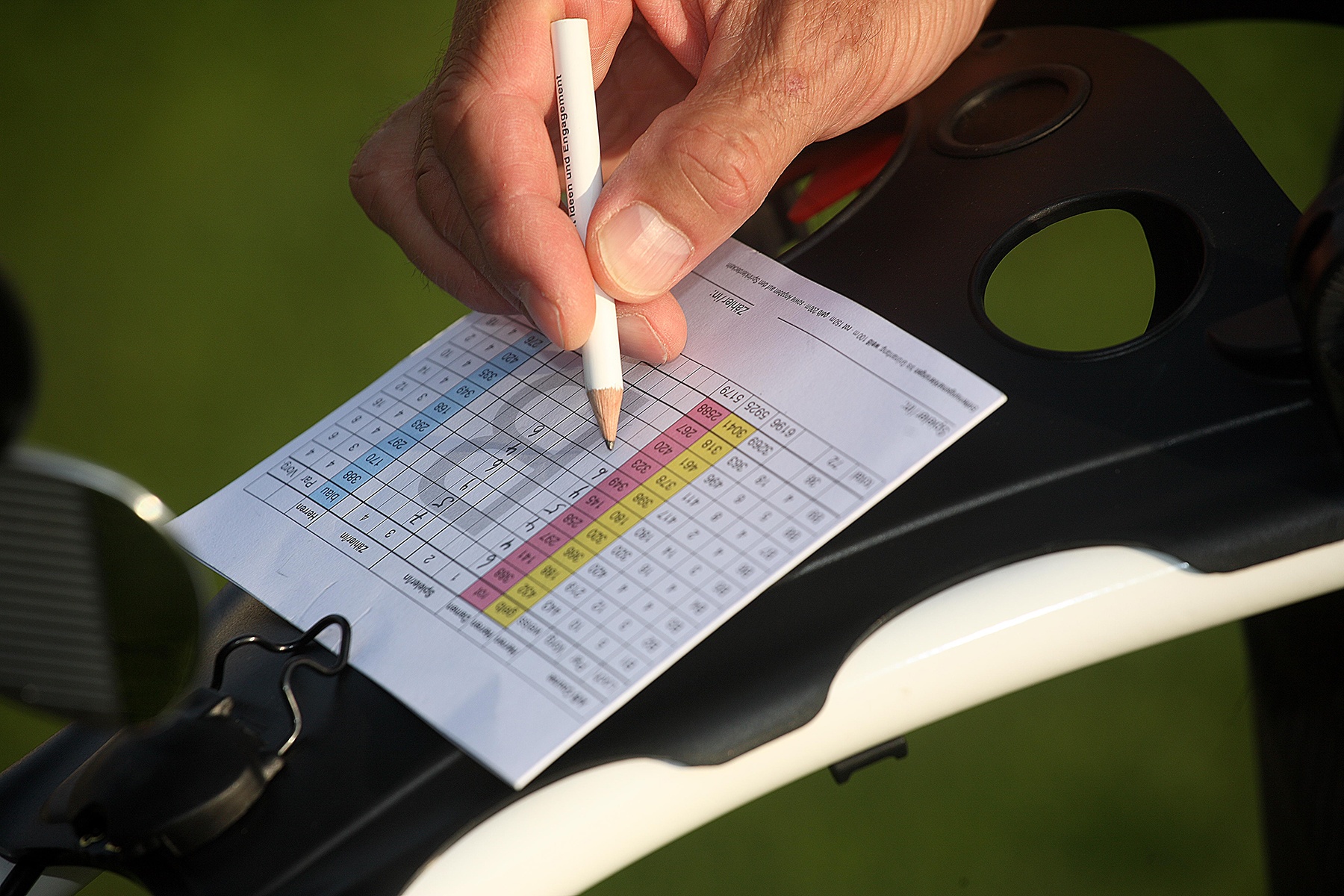Golf has enjoyed great popularity worldwide in recent decades. Accordingly, there are different ways of counting golf in different countries.
In principle, there are two basic ways to count correctly when playing golf. The scorecard is used by the player to keep a record and is kept by one player for the other. The scorecards are compared together at the end and handed in after both players have signed the scorecard. These rules apply equally to professionals, amateurs and amateur players.
In golf, the number of strokes a golfer needs to reach the hole is counted. The number of strokes starts at the tee and ends when the ball is played into the hole. Each time the ball is played, a stroke is counted, regardless of whether the ball is played from the tee, from a fairway, from a rough or from a bunker.
There is a certain number of strokes allotted for each hole and these are referred to as“par“. The par for each hole is determined based on the length and other challenges of the hole. If a golfer reaches the green in fewer strokes than the par for the hole, he has scored a “birdie”. If he reaches the green in the same number of strokes as the par, he has scored a “par”. If he reaches the green in more strokes than the par, he has made a bogey or worse.
At the end of the game, the stroke counts of all holes are added together and the golfer with the lowest stroke count wins the game. The stroke count is also used to calculate a golfer’s handicap, which is a number that indicates how good a golfer is compared to other golfers. The handicap helps to play golfers of different abilities at a fair level.

Stroke play or the counting game: Stableford scoring has been the most frequently used variant since 1898
Match play or hole play – in this variant, two direct opponents bet against each other. The player who needs fewer strokes on a hole is the winner. So there is a winner for every hole. If both players need the same number of strokes, the hole is deemed to be shared or halved. Whoever leads with more holes than there are holes left to play on the remaining round has won the round. You can give away a whole hole or a single shot before the end.
A hole game can also be played with a handicap. This means that the player with the higher handicap gets one stroke more on the number of the most difficult holes. Terms such as holes up (so many holes in front), holes down (so many holes behind) and all square (tied) are used.
Once you have immersed yourself in the world of golf, you will also become interested in competitions. However, you need to be familiar with the numerous types of games and counts in golf if you want to be successful. There are numerous betting providers who can help you with useful tips and information on golf betting.
Stableford
Stablefordis the most commonly used scoring method in a handicap tournament or a private Extra Day Score (EDS) round, which is now standard in most amateur tournaments. The advantage of this method of scoring is that every player can easily see from the number of strokes recorded whether he has underplayed, overplayed or reached his handicap.
The English physician Dr. Frank Stabelford developed this method of counting in 1898. It was used for the first time in 1932, but it was only 70 years after his invention, in 1968, that it was included in the official golf rules.
Another advantage of Stableford is that the game is not over after a bad hole score. After a bad hole, the ball can be picked up without penalty and play can continue. This would not be the case in an international tournament. This is particularly advantageous for amateur golfers, as in such cases there is only one strike result with 0 points for the score and not the total number of strokes as in a counting game. The overall result is then not completely spoiled.
Each player is assigned their own par on each hole by this ingenious Stableford counting system. You can already see your personal par in the form of a line on your scorecard. Players with a handicap of 18.0 are given one stroke for each hole and a bogey means a personal par for them. A handicap of 36 means 2 strokes for each hole and a double bogey means a personal par.
The Stableford scoring system enables players to calculate their net points very easily. There are 3 points for a birdie, 2 points for each par, one point for a bogey and 0 points for a double bogey or worse. Every player who has reached 36 stableford points after 18 holes confirms his handicap and may also have underplayed or overplayed.
More on how to calculate Stableford points (with online calculator)

Playing handicap and the personal par
In contrast to the DGV handicap, the handicap is always an integer. You can use a simple key to distribute the handicap to the individual holes as handicap strokes for the Stabelford method of counting. The handicap reveals how many additional strokes an amateur receives so that a comparison can be made with the par value of the course for the tee concerned.
The given strokes are distributed to the individual holes according to a clear and simple logic. In an 18-hole tournament, integer multiples of 18 are first distributed evenly over all holes. The shots are given as follows: Playing handicap 18 gives one stroke, playing handicap 26 gives 2 strokes each and playing handicap 54 gives 3 strokes each. In the case of non-integer multiples of 18 handicaps, the integer multiples of 18 are distributed evenly first, while the remaining points are distributed to the most difficult holes. These can be recognized by the “handicap” of the individual hole. The hole with the greatest degree of difficulty has the handicap 1 and the easiest hole has the handicap 18 on an 18-hole course.
For example, a player receives a handicap of 22 at a tournament. The first 18 points are distributed evenly over all holes and the remaining 4 points are distributed over the most difficult holes, i.e. the holes with the handicaps 1, 2, 3, 4. These holes with the handicaps 1, 2, 3 and 4 each mean 2 strokes for the player and all others one stroke each.
Types of golf bets
Nassau – this form of betting was invented around 1900 on Long Island at the Nassau Country Club and is now one of the most common forms of betting in golf. In Nassau, you bet in three parts, i.e. you bet on the first nine holes, then on the second nine and then on the entire 18-hole round. In some countries, such as the UK, it is customary to bet double on the 18 holes.
Arnies – this type of bet was named after Arnie Palmer. With Arnies, points are awarded if the player misses the fairway or the green but is still allowed to play his par and receives points or a bonus for doing so.
Garbage – also known as “side bets” or “trash”, these are smaller bets or agreements for the round.
Prague variant – here the stakes are played out on the individual. Players can double the bet after all balls have been played. They may then quadruple and then quadruple again.
Syndicate – also known as the “penny pot skins game”. Any number of players can take part in this betting game, who must place a permitted stake per hole. The player with the best ball receives the entire stake for the hole. If there is no best ball, the stake on the next hole is added to the stake not won on that hole until there is a single best ball. This player then receives the accumulated stakes.
Hogans – this type of bet was named after Ben Hogan. The player who hits the fairway, the green, plays par and receives a point, a bonus or a stake.
Barky – the player makes his par even though he hits a tree.
Gurgly – the player makes his par or better even though he hits into a water hazard.






